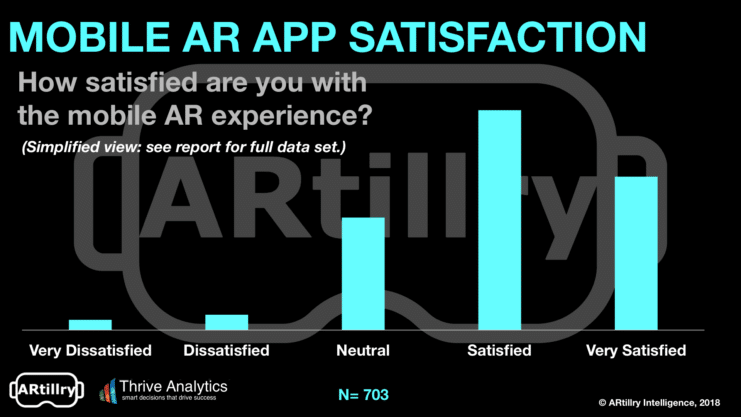
We’ve all seen them: Glowing demo videos for AR experiences that may or may not exist yet. This was rampant in AR’s early days and still continues — capturing our imagination but also sometimes setting us up for disappointment.
“We’re in this unfortunate era of AR demo-itis,” posed TechCrunch’s Josh Constine to kick off an interview with Facebook’s Ficus Kirkpatrick at TechCrunch Sessions AR/VR. “I get the need to inspire people about the exciting future of [AR], but is there an unhealthy element to this hype?
Magic Leap is perhaps the most cited culprit, with its famous “whale in the gym” video. The product that shipped many months later (Magic Leap One) didn’t deliver this experience, or at least it was compromised by a non-whale sized field of view that wasn’t apparent in the demo.
“Everyone working in AR has been guilty of showing off a cool tech demo,” Facebook’s Kirkpatric said at the same TechCrunch event. “I think we need to advance the tech, and I think demos are cool and they’re inspirational, but it needs to be balanced by actual stuff you can use.”
Vantage Point
So the question is, are some demos doing AR a disservice by mismanaging consumers’ expectations? On one hand, it’s a positive step to build anticipation and inspire people about an immersive future. On the other hand, is it a game of cry wolf that diminishes user trust?
Early ARkit demos set this tone, such as an app to identify grocery items in-store. It was slowly realized that this isn’t possible without semantic scene understanding, object recognition, store inventory data, persistence and lots of other things that led to 2018’s recognition of the AR cloud.
Another issue is demo vantage point. Mobile AR demos use full-screen video to represent the dimensions of the smartphone screen. However, the actual experience involves a smaller screen held at arms length. So should a more accurate demo video be shot from over the shoulder?
“Unless it’s shot over the shoulder to show what the actual user experience is, you just have animals jumping on tables.” said Google’s Ryan Hickman during a panel discussion at Samsung NEXT. “It’s really important that we get there, because when we have the right UX, it will take off.”
Selling TVs on the Radio
Another issue is specifying availability. Some Google AR demos at its I/O event weren’t available to consumers at the time (some still aren’t). That’s the case for in-store VPS (’17) and fox-guided walking directions (’18). Yes, it’s a developer event but end-user availability could be clarified.
The video game industry was slammed years ago for simulating gameplay in trailers, leading to the now more common disclaimers that video footage is “not actual gameplay.” Some version of that is perhaps what AR needs — either mandated or self-policed through standards bodies.
But in fairness to Magic Leap and others, the challenge is that “actual gameplay,” in AR doesn’t translate to the 2D media through which it’s marketed. As Rony Abovitz once said (paraphrasing) marketing AR is like selling TV on the radio. You just have to experience it firsthand.
This was a key finding in our mobile AR consumer survey data with Thrive Analytics. AR users are highly satisfied while non-users are ambivalent. This uncovers a big challenge for AR: you have to try it to really get it (just like VR). And the UX can’t truly be captured through images or video.
Cry Wolf
So where does that leave us? The above challenge makes it forgivable that AR innovators want to simulate the experience in various ways, given that it can’t really be captured in its true form. But though they get some leeway, we still need standards for clarifying real versus simulated demos.
The solution could be part technology and part human. The marketing/rendering challenge could represent an opportunity for someone to innovate a more accurate way to demo AR. The industry can also develop standards of disclosure when demoing things that aren’t yet available.
Also look to best practices. 8th Wall, Happy Giant and 6D.ai are a few companies with demo videos with actual AR footage. Some are highly produced, including music and quick cuts between various features, but the interactions are real and sometimes even shot at arms length.
Altogether, it’s about earning consumers’ trust in AR. The technology will be transformative someday, but is its current form good enough to justify deceiving people? The collective consciousness will frown on that behavior, and it could take a while to win that trust back.
For deeper XR data and intelligence, join ARtillery PRO and subscribe to the free AR Insider Weekly newsletter.
Disclosure: AR Insider has no financial stake in the companies mentioned in this post, nor received payment for its production. Disclosure and ethics policy can be seen here.
Header image credit: Magic Leap


